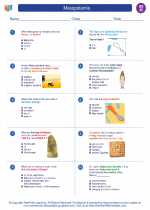Día de los Muertos - Day of the Dead
Día de los Muertos, or Day of the Dead, is a traditional Mexican holiday that celebrates and honors the lives of deceased family members and friends. It is a vibrant and joyful occasion that takes place over several days, typically from October 31st to November 2nd.
History and Origins
The origins of Día de los Muertos can be traced back to ancient Mesoamerican civilizations, particularly the Aztecs. The holiday has evolved over time, incorporating elements from Catholicism brought by Spanish colonizers. Today, it is a unique blend of indigenous and European traditions.
Traditions and Customs
During Día de los Muertos, families create ofrendas, or altars, in their homes or at the gravesites of their loved ones. These ofrendas are adorned with marigolds, candles, incense, and the favorite foods and beverages of the deceased. It is believed that the spirits of the departed return to enjoy these offerings.
Another iconic symbol of Día de los Muertos is the calavera, or sugar skull. These intricately decorated skulls are often made from sugar or chocolate and serve as both a festive decoration and a way to honor the dead.
Celebrations
Throughout Día de los Muertos, communities come together for lively festivities that include parades, music, dance, and feasting. The atmosphere is one of remembrance and joy, as people celebrate the lives of those who have passed on.
Study Guide
- What is the significance of ofrendas in Día de los Muertos?
- How does the celebration of Día de los Muertos reflect both indigenous and European influences?
- Describe the symbolism and cultural importance of sugar skulls in the context of Día de los Muertos.
- Compare and contrast Día de los Muertos with other cultural traditions related to honoring the deceased.
- Explain the role of music and dance in the Día de los Muertos celebrations.
These questions can serve as a starting point for further exploration of Día de los Muertos and its cultural significance.
[Día De Los Muertos] Related Worksheets and Study Guides:
.◂Social Studies Worksheets and Study Guides Eighth Grade. Mesopotamia

 Worksheet/Answer key
Worksheet/Answer key
 Worksheet/Answer key
Worksheet/Answer key
 Worksheet/Answer key
Worksheet/Answer key
